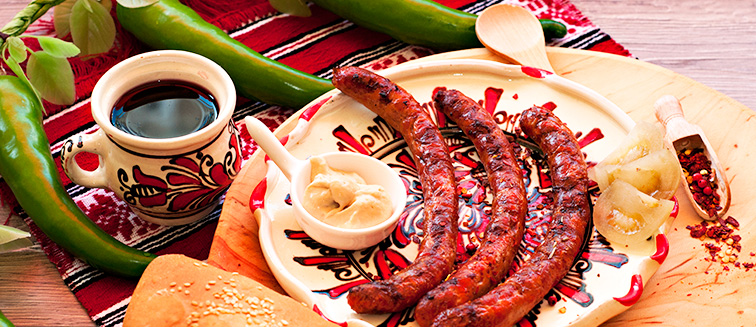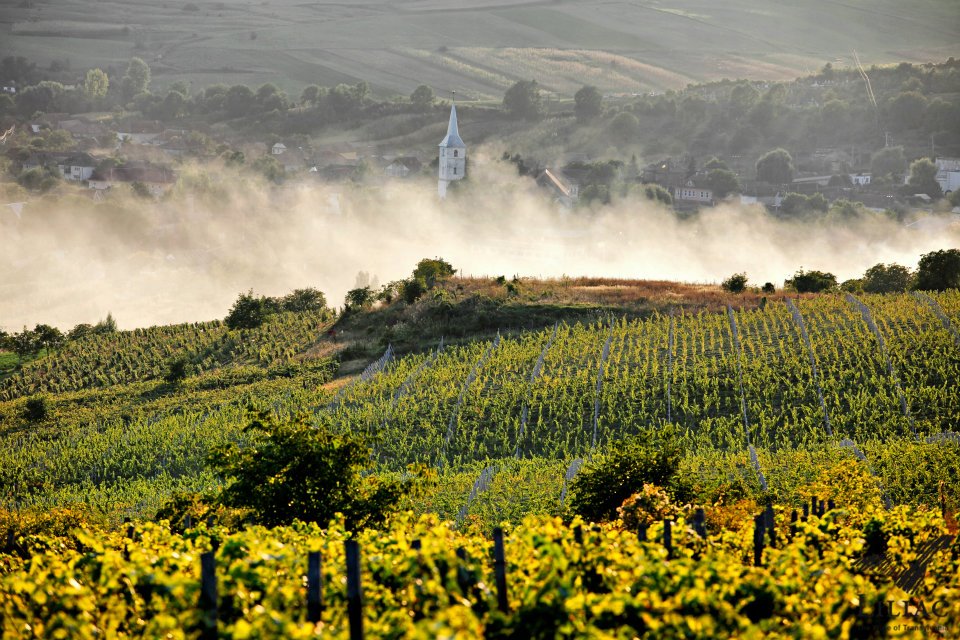
The Romanian cuisine blends multiple and diverse influences modified in the course of the centuries. It is the reflection of other manifestations of the turbulent life of this great country, which is at the crossroads of diverse cultures and traditions.
Romanian cuisine undoubtedly has a Balkan origin, although it has developed very particular characteristics due to three main causes: the marked influence of Russian and Turkish cuisine, the echoes of Western gastronomy, especially the Hungarian and French ones, and a large amount of variety of products derived from the fertility of this land.

Mouth-Watering Dishes Found Nowhere Else
In recent years, this country went through major economic and social reforms. That said, thousands of satisfied visitors returned home from now famous provocative Bucharest stag parties with stories of mouth-watering menus. Today we will cover some of the most famous dishes and drinks that folks of this amazing country love to enjoy and maybe fuel your own desire to visit this nation.
What we can find on most plates of this country is a product of a pure tradition, deeply rooted in the tastes of shepherds and peasants. The dish called Mâmâligâ is a kind of corn flour polenta that is still being cooked in a copper bowl. It can be seasoned with butter or cheese or with cream to serve as an accompaniment to other dishes.
The Romanians usually start the meal with the Gustâri, to continue with some tasty soups, generally of Balkan origin, based on meat. Mititei is very popular, very spicy sausages made with the meat of various kinds and usually grilled for the best taste.
A dish of Moldovan origin that is also welcomed in Romania is the Sârmale, cabbage rolls in brine with minced meat, rice and spices. They are found in many restaurants in Bucharest. More complicated and very tasty specialties are the Musaka prepared with minced meat, tomato and aubergine layered on top and baked.
The Pastramă is made of beef, pork or smoked goat. Or the very spicy Piftia that is very unique kind of jelly pork pie. And the Drobo, typical dish for the Easter holiday, based on meat and lamb slaughter is also a permanent member of any restaurant menu that you can find in any city.
The culinary tradition of Transylvania is present in Romanian cuisine, especially with the famous Varza a la Cluj - Napoca, a delicious baked dish made with cabbage leaves in brine layered. Alternating with other minced meat, and roasted pork seasoned with pepper, tarragon, savory and paper.
As a country that has a coastline, the Danube, as well as many mountain ranges, Romania has in its culinary tradition a series of magnificent dishes based on fish. Among the river fish, the most common is the carp and the most appreciated specialty is "carp la pro tab", or, what is the same, roasted carp, but also prepared in soup, marinated, stuffed with crushed nuts, currants, aromatic herbs and cooked in the oven or stewed with oil and tomato.
There are also delicious Rací, freshwater prawns stewed in vinegar, flavored and served with crushed walnut, garlic, and oil or rice. The caviar of the Danube sturgeon is also splendid.
The only problem for cheese lovers will be that they will not know which one to choose since Romania is a country that traditionally embraces the cheese industry. Both sheep, cow or buffalo. Among the best known are Brânzá de Burduf, sheep's cheese cured in fir bark. Or the Urda, sweet sheep cheese that comes as a perfect addition to wine tasting.
As for the pastry, in Romanian cuisine, we find all the matches and variety of Central European kitchen. The Placenta is a kind of puff pastry, and can be prepared in many different ways; of cheese (cut brânzâ) or pumpkin (cut Doleac).
The specialties in the region of Oltenia; of apple jam (cu mer); of nuts and apple (baklava); or of almonds and apple (serialise). The Dulceata, a confection offered to the visitor upon entering a house, is the symbol of Romanian hospitality.
Drinks from Romania
The typical drink of Romania and also the favorite of the Romanians is the Tunica. Plum brandy is Romanians’ favorite aperitif. The Romanian beer is a welcome drink, but the real pride of the country can be found among its wineries. There is an excellent choice for a wide variety and quality.
The traditional cultivation of the wine in Romania dates back to the time of the Dacians, and since then retains an indigenous strain that produces a white wine called Itasca, although it has also been possible to obtain a black variant. As for the other types, the wines produced are typical of the areas where the influence of the Habsburg Empire is noticed: Cabernet, Merlot, and Riesling, especially.
There are some of the typical Romanian drinks, such as Tunica and different wines. A suitable land and a lot of effort have resulted in the creation or revaluation of prestigious labels, such as Cot-Nari. It's friendly white wine of very ancient origin produced in Moldova. Wallachia is the homeland of Dragasani, a dry white wine known in Europe since the late nineteenth century. In Transylvania, fruity wines are given and one of the best is the Minis, a strong one with red ruby color. Dobrudja, on the other hand, is known for the red Murfatlar, one of the stars of Romanian winemaking.
In any case, it must be said that the country suffers a technological gap since 1989, and wines, in general, have a very unequal quality. Yes, the grapes continue to be of high quality nevertheless.
As for other drinks, Turkish coffee is not always easy to find. It is more common to find bars and restaurants where espresso coffee is served. And don't forget that Romanians appreciate a good cup of tea at any time of the day.
You may also like
To Eat or To Keep: The Shelf Life of Your Favorite Goods
How the Root-to-Stalk Cooking Can Help Save the Planet
12 Organic and Health Food Subscription Boxes You Need to Try

